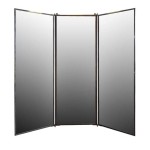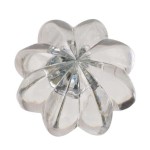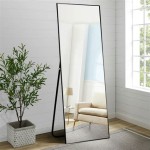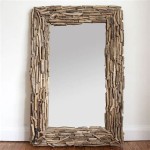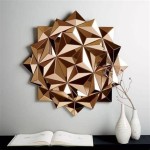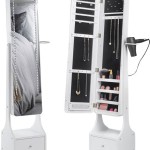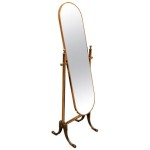Do Concave Mirrors Make Things Look Bigger or Smaller?
Concave mirrors, characterized by their inward-curving reflective surface, possess the intriguing ability to produce both magnified and diminished images, depending on the object's position relative to the mirror's focal point. Understanding this duality requires examining the principles of reflection and image formation.
A key concept in understanding concave mirror behavior is the focal point. This is the point where parallel light rays, after reflecting off the mirror's surface, converge. The distance between the focal point and the mirror's center is known as the focal length. The focal length is a crucial parameter in determining the nature of the image formed.
When an object is placed beyond the focal point of a concave mirror, a real, inverted, and potentially diminished image is formed. "Real" signifies that the light rays actually converge at a point, forming a tangible image that can be projected onto a screen. "Inverted" indicates that the image is upside down relative to the object. The size of the image depends on the object's distance from the mirror. If the object is significantly farther than the focal point, the image will be smaller than the object. As the object moves closer to the focal point (but remains beyond it), the image size increases.
As the object approaches the focal point, the image continues to enlarge and moves farther away from the mirror. When the object is precisely at the focal point, the reflected rays become parallel, and no real image is formed. Instead, the light rays travel parallel to each other, never converging to create a visible image. In practical terms, the image is considered to be at infinity.
When the object is placed between the focal point and the mirror, a virtual, upright, and magnified image is formed. A "virtual" image occurs because the reflected light rays do not actually converge. Instead, they appear to diverge from a point behind the mirror. This image cannot be projected onto a screen. It appears to the observer as if emanating from behind the mirror's surface. The closer the object is to the mirror, the larger the virtual image appears.
The magnification factor of a concave mirror quantifies how much larger or smaller the image is compared to the object. It is defined as the ratio of the image height to the object height. A magnification greater than 1 indicates an enlarged image, while a magnification between 0 and 1 signifies a diminished image. A negative magnification denotes an inverted image.
The relationship between object distance, image distance, and focal length is mathematically described by the mirror equation: 1/f = 1/do + 1/di, where 'f' is the focal length, 'do' is the object distance (distance from the object to the mirror), and 'di' is the image distance (distance from the image to the mirror). This equation allows for the calculation of any one of these parameters if the other two are known.
Concave mirrors find numerous applications due to their diverse image-forming capabilities. In telescopes, large concave mirrors gather and focus faint light from distant celestial objects, creating magnified images for observation. Shaving or makeup mirrors utilize the magnifying properties of concave mirrors when the face is placed within the focal length, allowing for a closer view of details.
In headlights and flashlights, a light source placed at the focal point of a concave mirror produces a parallel beam of light, ideal for projecting light over a long distance. Solar furnaces employ large concave mirrors to concentrate sunlight onto a small area, generating intense heat for various applications.
The reflective properties of concave mirrors are also harnessed in ophthalmoscopes, instruments used for examining the interior of the eye. The concave mirror focuses light into the eye, allowing the physician to view the retina and other internal structures.
Understanding the principles underlying concave mirror behavior and the factors influencing image formation enables the effective utilization of these versatile optical devices in a wide range of scientific, technological, and everyday applications.
Objects In The Mirror Are Actually Images Article Khan Academy

Question Comparing The Sizes Of Images Produced By A Concave Mirror Nagwa
How Do Reflections From Convex Mirrors Make Objects Appear Smaller Quora
Objects In The Mirror Are Actually Images Article Khan Academy
Objects In The Mirror Are Actually Images Article Khan Academy
Objects In The Mirror Are Actually Images Article Khan Academy

Why Do I Look Diffe In Mirrors 5 Common Reasons
Why Are Rear View Mirrors Designed In Such A Way That Objects The Mirror Closer Than They Appear Quora
Objects In The Mirror Are Actually Images Article Khan Academy

How Are Concave Mirrors Used Sciencing

